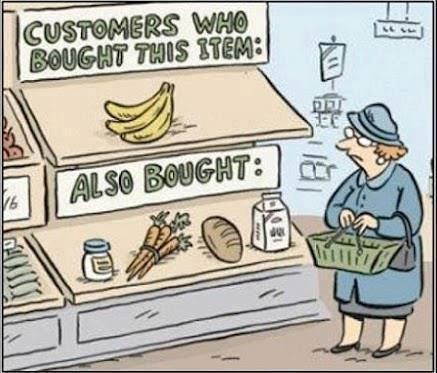“Never confuse education with intelligence.”
– Author unknown
Also, never confuse big data with business intelligence; it is only when big data and business intelligence are well and truly integrated in a single process that you get in-depth data intelligence that makes way for big business decisions.
We are flooded with exciting new technological innovations and vendor solutions for data warehousing and management. There is no lack of good data analytics and business intelligence tools and businesses today are not shy of using emerging technological solutions to adapt to constant changes, make decisions, improve performance, and drive innovation.
However, a vast majority of these business decisions are more of reactionary than predictive in nature. Action comes much later than essential. This is why it’s important that you don’t confuse big data with business intelligence.
Let’s say for instance, you blog on topics like parenting, teenage mom advice, pregnancy guides, etc. Your blog grows popular (or so the comments told you) and eventually you decide to monetize it. Maybe you become an affiliate of a few respected brands in the space and sell their products from a “Store” section. You even put together a few ebooks from collections of your posts on a topic and create dedicated landing pages to help sell them. Finally, you configure Google Analytics, switch on Ecommerce Tracking and set up Conversion Goals to see how you’re doing with traffic, clicks and sales.
Now, say you land an opportunity to promote your book on teenage pregnancies in a book chain in one state of your choice. Research from Guttmacher Institute tells you that the highest rate of teenage pregnancies is seen in New Mexico, so you might think your prime target area is New Mexico. However, Google Analytics tells you that your book currently sells more in California and Nevada. What are you going to do?
Google Analytics just gives you the raw numbers; it is for you to put 2 and 2 together and come up with a sales and marketing strategy that allows you to corner more markets.
The fact that you are using sophisticated big data tools doesn’t make your business intelligent. Business intelligence comes from being one step ahead at all times.
From trending Twitter topics to customer support calls, every bit of data is potential goldmine for driving business intelligence. It would be a gross mistake if you invest in expensive technology to gather and mine data but don’t use it to predict and act on business shifts and changes.
Reactionary Analysis
Reactionary analysis is analyzing historical data to find loopholes in processes and policies. It is also known as rear-view or hindsight analysis. Based on past data, businesses come to a conclusion about “what went wrong and why,” and then make decisions to rectify it.
Reactive businesses depend on triggers like the entry of a new competitor in the market instead of being fully prepared to act in response when a new competitor enters the market. These businesses are slow-moving in nature and because of their failure to anticipate changes, they are at the mercy of the impact of market changes.
Predictive Analysis
It is no longer enough to rely on historical data alone. Companies need the intelligence from their structured and unstructured data to determine what’s in store for them ahead.
Predictive analysis uses “telescopic” and “microscopic” views to connect seemingly unconnected dots for more strategic insights. This is usually done with the help of several methods like market basket analysis, decision trees, clustering, neural nets, regression modeling, text mining, A/B or split testing, hypothesis testing, and genetic algorithms.
If the last sentence made you look like this,
I apologize. Let’s look at a couple of examples.
In any analysis, trying to estimate the relation between a dependent (predictable) variable and an independent (confounding) is known as regression analysis. In his book Using Econometrics, author A. H. Studenmund explains how businesses can use regression-based predictive analysis to estimate changes in consumer habits or changes in local economy over the next quarter or year, and plan accordingly.
Another method commonly combined with predictive analysis is A/B testing. Advertisers and marketers have been using it to fine tune their campaigns for years. For instance, email marketers can determine the delivery times, templates formats, and content that generate the most number of opens and click-throughs using A/B testing.
Here are a few key differences between reactionary and predictive intelligence:
- Reactionary analysis does not help in making “spur of the moment” decisions but can help you form well-calculated decisions after identifying data and patterns.
- Reactionary analysis is about why it went wrong whereas predictive analysis is about what can go wrong and how it will go wrong.
- Though reactionary analysis has been proven to be a safer method than predictive analysis, companies adopting it stand a chance of losing a few customers or a drop in market share because of delayed decision making.
- Managers and analysts using reactionary analysis need to have deep analytical mind to identify and understand patterns and reach to conclusions. Managers using predictive analysis need to be proactive and focused on continuous improvement, even when “everything is okay.”
Applications of Predictive Analysis in Real World Situations
Online buying: A simple example of predictive analysis application is seen in online stores that use predictive tools to recommend books or shampoo based on your previous purchases. I get more offers on books, pet supplies, curios and artifacts than I know what to do with them, thanks (or no thanks) to predictive analysis!
Bookings and price determination: One of the biggest users of predictive analysis is the airline industry. Unlike consumer goods where you can sell unsold products the next day or month, it is not possible for airlines to sell unsold seats the next day. So to set profitable prices, they use predictive analysis based on time, weather, holidays, and other determinants.
Decrease frauds: Credit card companies often use predictive analysis to stem the tide of fraudulent cases. For instance, if you are making too many purchases, shopping from another country or location, or just buying something *cough* that you usually don’t buy; your card can be blocked. This is done based on your purchase history combined with predictive analysis.
Improve internal processes: Predictive analysis is also used within the organization to improve internal processes and productivity. For instance, workflow testing and reports can highlight problem areas in productivity areas. Businesses can use visual stream maps and process simulator models for manufacturing, supply, accounting, etc. and then test various scenarios to come up with the best solution in a risk free environment.
A Better World with Predictive Analysis
Predictive analysis is already used in all kinds of scientific studies and business implications, but with better predictive tools, there is no limit to the number of risks that can be averted! Big data intelligence and predictive analysis can improve disaster response, crime forecasting, and even help in the fight against terrorism.
Government agencies run predictive analysis to determine problem areas in making healthcare truly beneficial and coming up with social schemes having lesser loopholes. From the entertainment to insurance, from hospitality to agriculture, predictive analysis can truly make the world a better place.
But there’s a catch. While predictive analysis can give you immense benefits and lead to new opportunities, it is not the only sword that cuts. Businesses must be careful not to ignore reactionary analysis altogether, even as more and more managers and decision makers are leaning towards predictive. Wisely using your data in a weighted combination of reactionary as well as predictive analysis will give you timely and actionable 360-degree intelligence.
Author’s note: All images used in this post are memes and not subject to copyright.









![[Research Round-Up] New Study Shows the Continuing Value of B2B Thought Leadership](https://customerthink.com/wp-content/uploads/development-2010010_1280-pixabay-innovation-ideas-think-1-218x150.jpg)
Lori: Good Points and great points. The visual breaks made the article more easy to read, thereby, showing the power of visualization. While Big Data and BI have a geeky etymology, for the CMO and her/his team, the visual representation of “That” data, is what matters.
So the Analytics, whether “Predictive” (hopefully) or “Reactionary” (reality), needs visualization, that appeals to the non-engineering (read ‘techie’) mind.
Regards
Shri Rajan